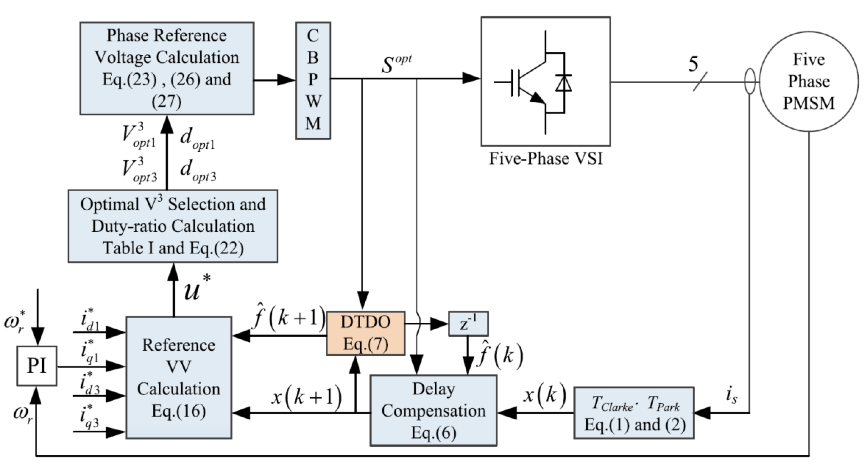A Constant Switching Frequency Multiple-Vector-Based Model Predictive Current Control of Five-Phase PMSM With Nonsinusoidal Back EMF
Authors: Cong Xiong, Haiping Xu, Tao Guan, Peng Zhou
Extended Abstract:
Multi-phase motors are becoming popular in high-power propulsion scene, and different control strategies have been adopted to and optimized for them to achieve higher drive performance. Among these the model predictive current control (MPCC) method stands out for its accuracy and quicker dynamic response. But it still has some shortages that limit its application. Most of the existing finite-control-set model predictive current control (FCS-MPCC) schemes for multi-phase motor suffer from heavy computational burden, inevitable low-order harmonic currents, and variable switching frequencies. Some virtual voltage vector (V3)-based FCS-MPCC schemes can effectively suppress harmonic current by zeroing the harmonic subspace voltage on average during one sampling period. However, they fail when the motor has a nonsinusoidal back electromotive force.
In order to solve the aforementioned issues, this paper proposes a constant switching frequency multiple-vector-based FCS-MPCC scheme. Unlike the traditional FCS-MPCC schemes, the proposed scheme selects optimal V3s and their duty ratios in two orthogonal subspaces. Thus, it can simultaneously track the references in both orthogonal subspaces. In this approach, the optimal V3s and their duty ratios are directly obtained from the principle of deadbeat current control without time-consuming enumeration-based state predictions and cost function calculations. In addition, the obtained optimal V3s and their duty ratios are adopted to rearrange the pulse sequence to obtain constant switching frequency and can be simply synthesized by carrier-based pulsewidth modulation. Furthermore, a discrete time disturbance observer is designed to improve the robustness of the proposed FCS-MPCC against parameter mismatch. Finally, comparative experiments with traditional MPCC schemes for five-phase surface-mounted permanent magnet synchronous machine are carried out to verify the effectiveness of the proposed scheme.


